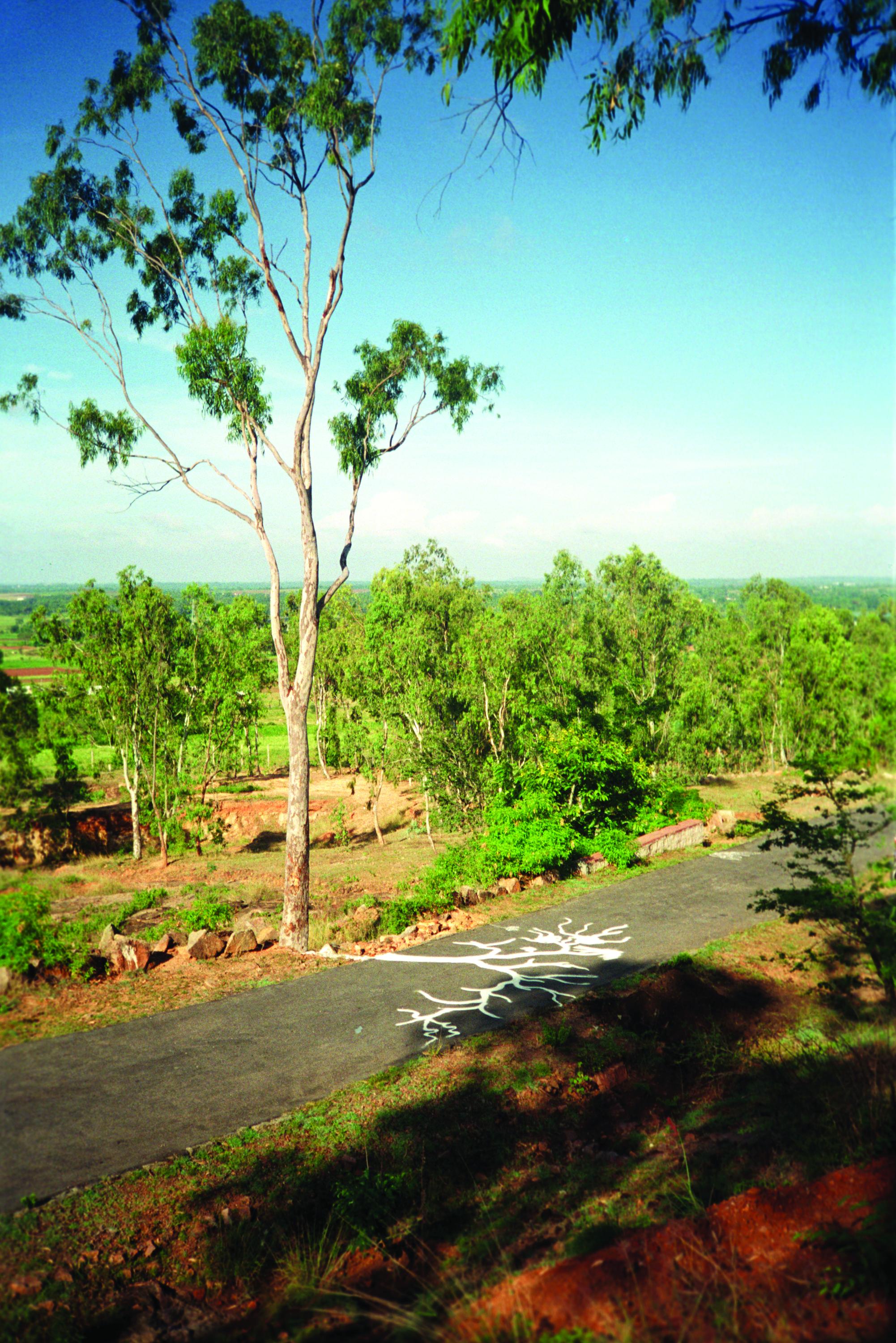MAJOR WORKS BY international emerging artists Lida Abdul, Vasco Araújo, Mircea Cantor, Dalziel and Scullion, NS Harsha, Abdoulaye Konaté, Susan Norrie and Rosângela Rennó are currently on show at the third Artes Mundi Exhibition at the National Museum in Cardiff, Wales. All nine artists are on the short list for the next Artes Mundi prize (worth £40,000), which will be announced on 24 April. This is the first time significant bodies of work will be shown in the UK by most of these artists and both Harsha and Konaté have created new works specifically for the exhibition.
The Indian artist NS Harsha has created six new panels entitled Come Give Us A Speech, as well as a floor painting, The School Within, which depicts young pupils in Mysore Government School uniforms relaxing and lying down in various poses. A comment on how children will enter a museum and be encouraged to learn, but also be forced to learn.
NS Harsha’s Mysore Studio
NS Harsha switches between different media and across different genres with fluidity, but his works can be roughly broken down into three categories. First there are his paintings, often highly detailed and produced on a large scale, which emerge slowly in his Mysore studio with perhaps two or three new works being completed every year.
Then there are NS Harsha’s site-specific projects often made in response to an exhibition thematic, which are developed out of experiments made in the studio and then produced on location relatively quickly in relation to the architecture, the space allocated by the curator and the other artworks in the exhibition. Finally there are the participatory projects undertaken almost exclusively with children. Importantly, all of these categories feed off one another and exist in a condition of interdependence, so that concepts and motifs which begin in one category can easily reappear in another.
Faculty of Fine Arts Baroda
On graduating from the Faculty of Fine Arts, Baroda in the 1990s, NS Harsha returned to Mysore and formulated his ideas in response to his surroundings, capturing the shifting cadences of life in this provincial city, rich with historical significance; a city which without destroying its essential character is gradually incorporating elements from outside. Increasingly as the artist has established a reputation in India and beyond, material gathered in this context gets transported to other contexts.
Incidents, characters and customs familiar to the inhabitants of Mysore have been put on display in galleries and museums around the world where they resonate differently. In an early work, Rangoli, visitors can experience NS Harsha’s fascination with traditional local patterns. Rangoli are complex symmetrical patterns in chalk or flour, made each morning on the floor at the entrance to peoples’ houses. They are designed to promote a harmonious atmosphere, and to keep the insects and evil spirits at bay.
Secret Element in His Practice
This began almost as a secret element in his practice or at least in works produced not directly for an art audience but more as an experiment for himself or perhaps for a passing farmer. These experiments consisted of chalk drawings made directly on the road in the style of rangoli but rather than constituting a symmetrical pattern the drawings traced the shadow of a tree or a tuft of grass cast by the early morning sun. NS Harsha created a work produced along similar lines, but this time on a monumental scale and for the audience of the Fukuoka Asian Art Triennial 2002.
Cosmic Orphans by NS Harsha
In a floor painting by NS Harsha, Cosmic Orphans (2006), a site-specific painting installation at the Sri Krishnan Temple created for the Singapore Biennale, Harsha covered the entire surface of the rooftop above the inner sanctum and the floor surrounding the temple’s tower with paintings of sleeping figures. Painted directly onto the floor using flat colours, the figures occupy a space not normally associated with traditional painting – their displacement provoking the audience to consider what is permitted and forbidden in relation to where they tread in the temple.
In the new six-panel work Come Give Us A Speech (2007/2008), whether they like it or not, the individual figures are tied to their seat, even though some try to escape. As Grant Wilson explains in his essay on the exhibition, ‘The hundreds of figures in this painting are seated on brightly coloured plastic chairs of the kind used in India at functions such as weddings and religious or political gatherings, and as the title suggests, they are all waiting for an oration to begin. In a comic take on the premise that the viewer completes the artwork, here the speaker is the individual viewer, who will stand in front of the work, and whose thoughts provide the content of the speech. This painting tells us something about the relationship between having a place in the world (our physical location, our particular attributes and our ontological community), and the way in which each subjectivity as a prism of meaning can resonate together with the rest’.
Artes Mundi 3 exhibition, with NS Harsha’s works, runs until 8 June at National Museum, Cardiff. For more details, www.artesmundi.org




